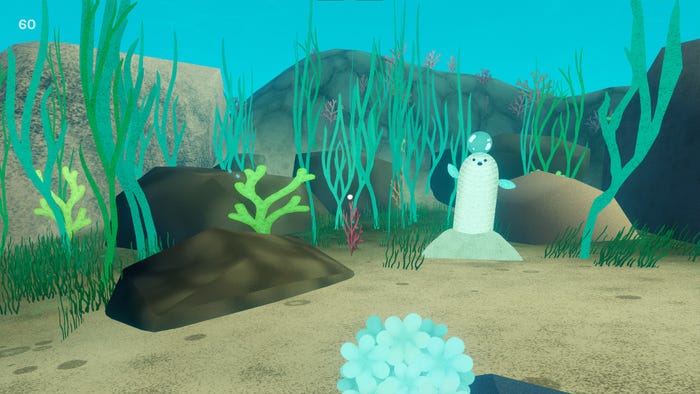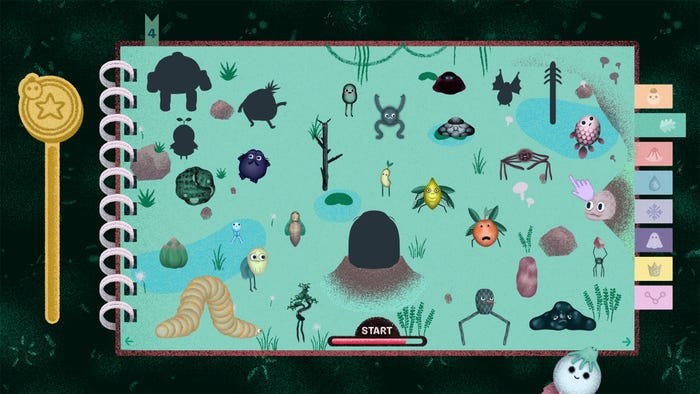Trending
Opinion: How will Project 2025 impact game developers?
The Heritage Foundation's manifesto for the possible next administration could do great harm to many, including large portions of the game development community.

| Picture Perfect: Exploring Photography Games | ||
| Every day this week, Game Developer is serving up a gallery of interviews, deep dives, and more digging into the evolution of Photography in video games. | ||
| Browse Latest Articles | Submit your Blog | |
The developers tell us how they curated an expressive set of creatures to photograph and why they chose on-rails over an open-world experience.

Penko Park takes players on a journey through an abandoned nature part, letting them take pictures of all of the strange, cute, and eerie creatures that wander within. If they can find them.
Game Developer spoke with Konstantin Kopka, the game’s designer, to talk about how ecosystems and stages helped shape the game’s unique animals, the challenges that would lead to them adopting an on-rails movement style over an open world, and why they gave the player a tool to fidget with as they waited for that perfect photo opportunity.
Game Developer: Penko Park sees players snapping pictures of eerie creatures in an abandoned wildlife park. Can you tell us a bit about what inspired you to create this experience?
Kopka: Our main inspiration was, obviously, Pokémon Snap on the N64 and our childhood memories of playing that. We tried many different approaches to figure out the best design and ended up with our take on what we thought was the "heart" of that experience.
We took many mechanics and tried to improve on them to make the levels and monsters as interesting as possible and focused a lot on replayability.
Penko Park straddles the line between cute and creepy. What drew you to capture these two feelings with the game's visual style?
The art for Penko Park was done by my brilliant sister, Elenor Kopka, who also does animated short films and ceramics. Weird, ghostly things were a common obsession for all three of us, but Elenor brought the cuteness with her art style.
What thoughts went into designing the game's various creatures and creating a whole ecosystem filled with strange beings to photograph?
Like all creative ventures, this was a very iterative process. We started with a small roster of creatures to see how they would look in-game and kind of just went from there. Over time, through the collaboration of Elenor (art) and Philip Feller (animation), the park's inhabitants grew to over 100 distinct creatures.
As soon as we had the vision for the different levels locked in, we tried to think about how the creatures would fit into the park's ecosystem, why they would be there, what they would do, and how we could set the scene for them.

Image via Ghostbutter.
Likewise, what ideas went into the creature's behaviors and the faces they make? How did you create and design all of the little actions and things they do so they felt natural to this world and would give the player interesting things to take pictures of?
Elenor and Philip did a brilliant job with that. I am really happy with the uniqueness of them all.
We designed a system of symbols (e.g. a smiley face, a frowny face, etc.) to give us a general guideline on what poses we would build. In the end, most creatures ended up with a mix of "standard" poses and one or two poses that are completely unique to this particular creature.
A very important design guideline we discovered was that it was important to have that ideal "photo moment" in the pose to give the player something to aim at.
What drew you to have the action take place on-rails? How did that affect the design of the game in ways both good and bad?
For a long time, initially, we actually had the game set in an open world, and we were very enthusiastic about this because it seemed cool and new.
We ran into tons of issues with this, however. The world felt very empty and confusing. As soon as we scrapped this aspect and made it a focused, on-rails experience, things just clicked into place and became much more fun to play. It was not an easy decision, but I think the game ended up better because of it.

Image via Ghostbutter.
As the game plays on rails, what thoughts go into creating a world and inhabitants that offer interesting photo opportunities when movement and perspective are limited?
The on-rails aspect meant that our level design process was almost like designing a ride in an amusement park where you can exactly control when and where things happen. This made it easier for us to create suspense, and even (very light) jump scares.
The decision to have the player (eventually) be able to stop the cart entirely posed some challenges because it restricted what we could and could not do.
The game rates the player' photos of the creatures as they snap pictures. What drew you to add this rating system? What thoughts went into choosing how this system would grade the pictures?
One of our biggest frustrations when playing and re-playing the original Pokémon Snap game was the tedious, slow rating process that happened after you finished the ride. So, from the start, we knew that this was something we wanted to improve and make way more fluid.
The rating algorithm is actually quite sophisticated. It even detects things like "how much of the creature is actually visible in the photo and how much is obscured by the environment, grass, etc."
Lastly, by having a one to three-star rating system, we allow for 100% completion of the game, which is important to some players.

Image via Ghostbutter.
What thoughts went into the design of the photo album and giving the player a nice place to put their pictures while also offering some useful gameplay elements?
We wanted the photo album to feel very rewarding and fun to browse, so we made sure that the process of putting the best snapshots into their slots would feel satisfying.
The camera has the ability to show the player a different take on the world with the Ghost-o-Vision. What drew you to add this functionality? What interesting elements do you feel it added to the game?
The Ghost-o-Vision mechanic is introduced a bit later in the game and adds the new challenge of limiting the time the player has to find the ghost. It's also related to the lore of the park and I think it adds a nice bit of diversity to the overall mechanics.
What drew you to allow the player to interact with the world using the Grappling Hand? What do you feel this element added to the game?
We thought it would just feel good to shoot stuff with a huge grappling hook/hand thing, so that was the main reason we added it.
Over time, we figured out more and more how this would actually be used in the game. For example, the ability to shoot and destroy parts of the environments was added very late in the development but quickly became a favorite. It's also a nice "fidget" mechanic that allows players to do something while idle, especially if they already replayed the level a lot.
You May Also Like